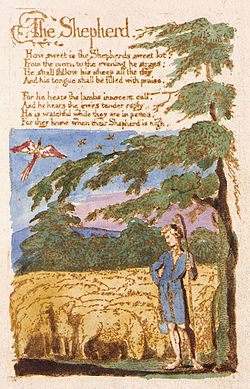
A shepherd's crook is a long and sturdy stick with a hook at one end, often with the point flared outwards, used by a shepherd to manage and sometimes catch sheep. In addition, the crook may aid in defending against attack by predators.
Contents
When traversing rough terrain, a crook is an aid to balance (like a Trekking pole). Shepherds may also use the long implement to part thick undergrowth (for example at the edge of a drovers' road) when searching for lost sheep or potential predators, as a staff-weapon for self-defence, and as a panking pole (used to shake ripe fruit, such as apples and pears, from high branches during harvesting).


